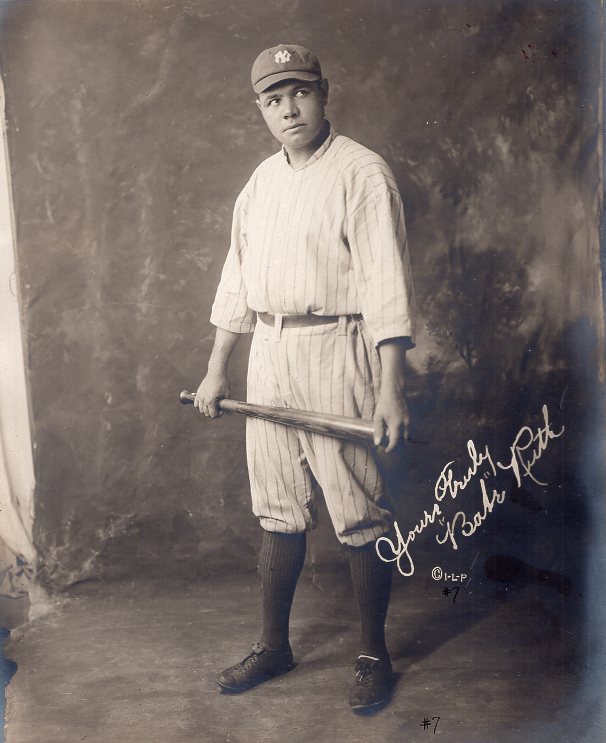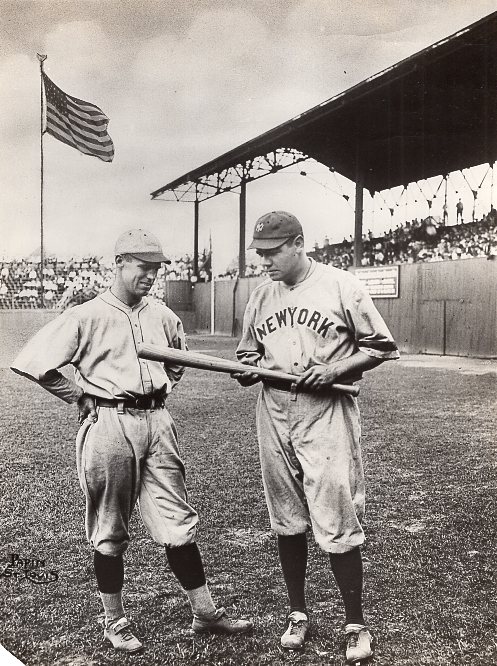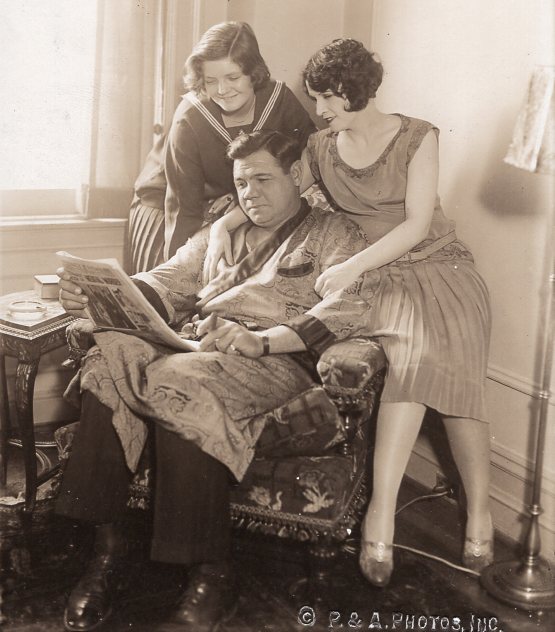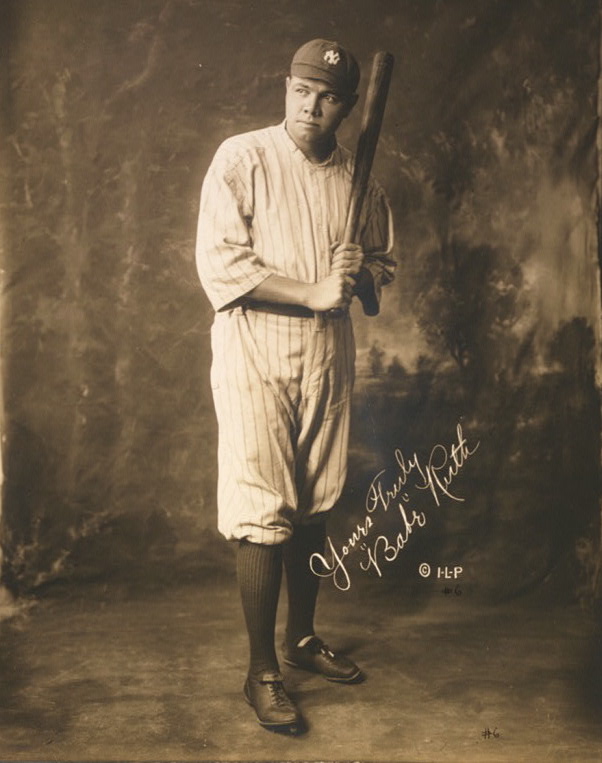
Capturing the images of celebrities on film has been a staple of the practice of photography since shortly after its invention in 1839. The pioneering generation of photographers recognized early on the money-making potential of capturing and circulating images of newsworthy rich and famous personalities. Celebrities likewise have recognized the obvious benefits that such publicity confers on attention-hungry newsmakers like themselves.
Baseball superstar George Herman “Babe” Ruth, Jr. no doubt had the photo portraits shown here taken for just such PR purposes. The Great Bambino’s storied baseball had just reached one of the first of many high points, and Ruth no doubt wanted to take advantage of the adulation now being heaped upon him by his fans, who were themselves increasingly hungry for Ruth paraphernalia.
This was a guess, though.
I found this original image in a huge, jumbled heap of miscellaneous photographic prints I received from a former photo archivist at the Library of Congress Prints and Photographs Division, George Hobart. In anticipation of his impending retirement, George had put out an email blast in 2017 asking if anyone wanted to take away the several boxes full of photographs that he had acquired throughout his career and now wanted to get rid of. Immediately jumping on his offer, I volunteered to come and get the boxes. Once I started sifting through the pile at home, I found this portrait of Babe Ruth amidst the jumble, barely captioned, its original historical context missing in action.

It made me wonder: what was the occasion of these portraits? What was the purpose? A look into the biographical details of Ruth’s life story soon gave me some clues.
The Babe began to gain public notoriety after he hit a then unheard of 29 home runs in the 1919 baseball season as a member of the Boston Red Sox. The end of the 1919 season happened to coincide with the end of a three-year, $30,000 contract he had signed with the Red Sox. Emboldened by the bargaining power of his stellar on-field performance that year, Ruth began making it known that he expected team owner Harry Frazee to double his salary in recognition of his value to the team.
In the gap between the 1919 and 1920 ball seasons, Ruth went on a media blitz to move Frazee to action, making daily press statements rejecting his contract as a “scrap of paper” that he threatened to refuse to sign. In the meantime, he got busy playing in exhibition games, attending fetes, soirees, and photo shoots to ratchet up the pressure. He even considered embarking on a publicity tour in Australia and a vaudeville tour with heavyweight boxer Jack Dempsey to gain himself public sympathy, but Frazee remained unmoved.

On Christmas Eve 1919, Ruth’s business manager Johnny Igoe delivered a public ultimatum to the Red Sox through the press that reiterated his demand for a higher salary, along with a statement that he would not play in the major leagues for any other team than Boston and would not consent to be traded. Two days later, team officials for the Red Sox and the New York Yankees signed papers that traded Ruth to New York for the princely sum of $125,000, or $1,617,568.75 in 2021 dollars.

Ruth’s first season with the Yankees more than proved his worth. That season, he broke his own record with a stunning 54 home runs. The following year, 1921, Ruth’s home-run record rose to 59 and then to 60 in 1927, a high-water mark that remained untouchable until Roger Maris surpassed it by hitting 61 home runs in 1961.
Incidentally, the Babe’s 30th home run hit of the 1920 season, the first one to break his very first big home run streak, happened on July 19, 1920, just four days before the photo studio portrait session with the firm Irwin, La Broad, & Pudlin that produced the images shown here. Although the motive behind these clearly heroic, self-regarding studio images remains unknown, it’s a good bet that the Babe was cashing in on the milestone he had just reached a few days beforehand.
